From improving diagnostic accuracy to streamlining administrative tasks, AI is helping optometrists provide better care and run more efficient practices. Whether it’s enhancing patient experience, improving outcomes, or growing the business, the right AI tools can make a significant impact in your optometry practice.
We’ll explore the top five AI tools reshaping optometry right now and how proper integration can help your practice thrive.
1. Topcon Harmony: Diagnostic Integration
Topcon Harmony is an AI-powered software that integrates all diagnostic data, such as from optical coherence tomography (OCT), visual field analyzers, and fundus cameras, into one platform, allowing optometrists to access and review patient information seamlessly.
Why It’s Game-Changing:
Harmony reduces the need for manual data transfers between devices, saving time and reducing the potential for errors. Optometrists can compare multiple diagnostic results side by side, making it easier to detect changes in a patient’s eye health and improve treatment plans.
2. IDx-DR: Diabetic Retinopathy Screening
IDx-DR is an FDA-approved AI tool designed to detect diabetic retinopathy by analyzing retinal images. It autonomously identifies whether a patient has diabetic retinopathy and the severity of the condition.
Why It’s Game-Changing:
IDx-DR provides optometrists with a fast, reliable screening option that doesn’t require specialist interpretation. By streamlining the screening process, optometrists can quickly detect at-risk patients, allowing for earlier intervention and better outcomes.
3. Eyenuk’s EyeArt: Retinal Disease Detection
EyeArt detects various retinal diseases, including diabetic retinopathy, glaucoma, and age-related macular degeneration (AMD). It analyzes retinal images with high accuracy, providing detailed reports on abnormalities.
Why It’s Game-Changing:
EyeArt increases the speed and precision of diagnosing sight-threatening conditions. Its comprehensive analysis allows optometrists to detect diseases in their early stages, often before symptoms appear, leading to better patient care and proactive treatment plans.
4. Visionix VX120+: Comprehensive Eye Exams
The Visionix VX120+ is an all-in-one diagnostic tool that combines multiple exams into one device. This tool conducts various tests, from corneal topography and aberrometry to intraocular pressure measurements. Then, the AI algorithms analyze the results in real time, giving optometrists a complete understanding of the patient’s eye health in minutes.
Why It’s Game-Changing:
The Visionix VX120+ optimizes the workflow in busy optometry practices by reducing the time needed to perform multiple tests. It also ensures more accurate and consistent results, leading to better diagnostic confidence and enhanced patient care.
5. Weave: Patient Communication and Scheduling
Weave is an AI-powered platform that helps manage patient communications, appointment scheduling, and follow-up reminders, helping you run a smoother practice with a system that integrates into your existing workflow.
Why It’s Game-Changing:
Weave improves the patient experience by ensuring clear, timely communication and helps optometry practices reduce no-shows and increase operational efficiency. Its AI-driven insights can even suggest optimal appointment times based on patient history, keeping schedules full and productive.
The Importance of Proper AI Integration in Optometry
While these AI tools can dramatically improve both the clinical and business aspects of an optometry practice, proper integration is essential for maximizing their potential. Poorly integrated AI systems can cause disruptions in workflow, confuse staff, and even compromise patient data security.
Proper integration benefits optometry practices by providing:
- Streamlined Workflow
- Enhanced Diagnostic Accuracy
- Increased Efficiency
- Improved Patient Care
- Data Security and Compliance
- Happier Staff
Without great integration and ongoing maintenance, updates, and so on, the opposite can be true about AI in your practice. However, that shouldn’t stop you from considering it!
The Future For AI In Optometry Is Bright
AI is not just the future of optometry—it’s already here, transforming how practices
operate and how patients are cared for. When integrated properly, these AI tools can boost efficiency, improve diagnostic confidence, and take your optometry practice to the next level. We’re here to help you identify the best tools for your practice and ensure they’re integrated perfectly. Then, if you want, we’ll stick around for long-term support.




